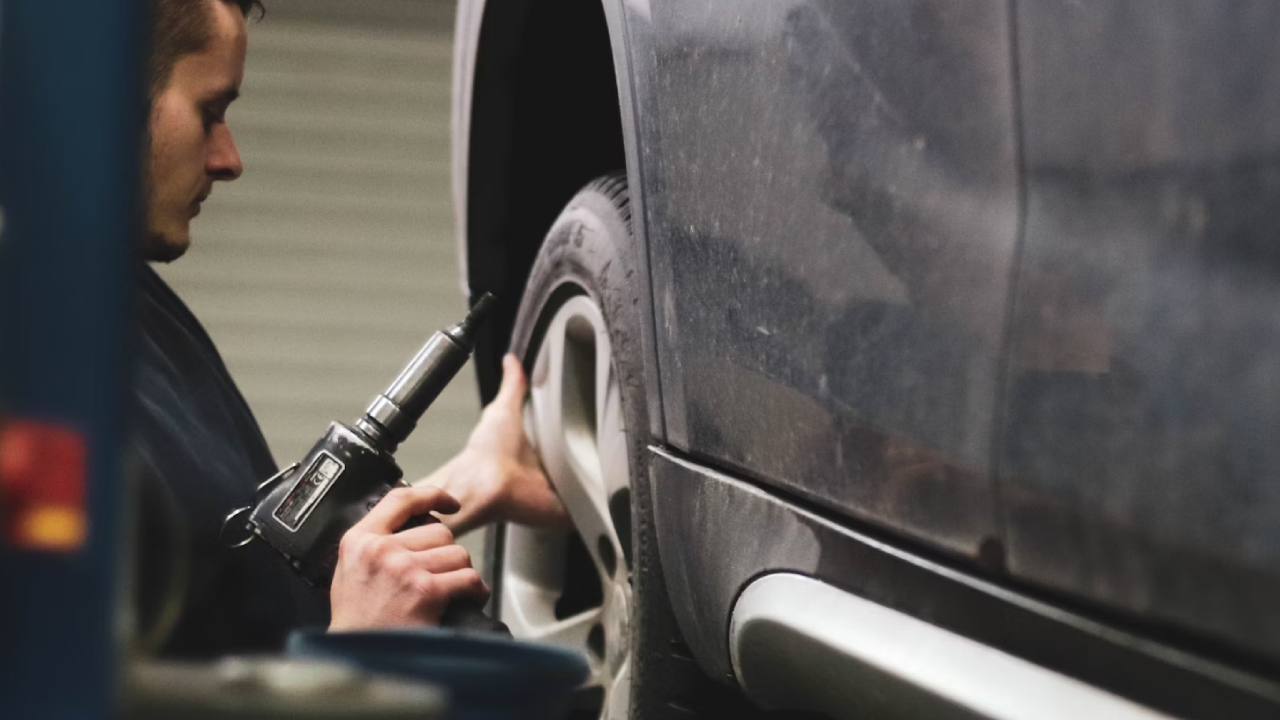Fall brings with it the beautiful transformation of landscapes, as trees change from lush green to vibrant shades of red, orange, and yellow. For many, fall is the perfect season to enjoy road trips through scenic routes and appreciate the cooling temperatures after the heat of summer. However, as picturesque as autumn may seem, it’s also one of the trickiest times of the year for drivers. Fall driving hazards may not be as well-known as those in winter, but they can be equally dangerous and often catch drivers off guard.
As we transition from summer to fall, weather conditions can become unpredictable, with a mix of rain, frost, and fog making regular appearances. Daylight hours dwindle, foggy mornings increase, and wildlife becomes more active, leading to higher accident risks. Roads can be covered with wet leaves that mimic the slippery texture of ice, and black ice can make an early appearance in certain regions. Even the beautiful, low-lying sun, while stunning to look at, can create intense glare that impairs visibility, especially during the morning and evening commutes. Each of these factors creates a unique set of challenges for drivers, and adjusting our habits to account for these seasonal hazards is essential.
Driving safely in the fall isn’t just about reacting to immediate hazards; it’s about preparing for an array of potential risks.
Table of Contents
1. Be Cautious of Wet Roads and Fallen Leaves

In autumn, rainfall can quickly turn dry roads into slippery surfaces. When rain mixes with oil buildup on the road, it creates a slick, almost greasy surface that reduces tire traction. This effect is amplified when fallen leaves scatter across the road. Leaves may look harmless, but once wet, they become extremely slippery, and wet leaves on the pavement can be just as dangerous as ice in the winter.
Safety Tips:
- Slow Down: Wet conditions require slower speeds, as braking distances are longer, and tire grip is reduced. Driving at a lower speed gives you more time to react.
- Avoid Hard Braking: Instead of slamming on the brakes, ease into them gently to avoid skidding.
- Clear Debris from Your Car: Fallen leaves can get lodged in your vehicle’s air intake or clog the windshield, obstructing your view. Regularly check and clear leaves away.
- Don’t Rely on Automatic Brakes Alone: In slick conditions, it’s better to take manual control and avoid relying solely on automatic braking technology.
2. Be Aware of Shorter Daylight Hours
As daylight hours dwindle in the fall, drivers are likely to be on the road in low-light conditions, even if they’re just commuting to or from work. Darkness can reduce visibility, making it harder to see pedestrians, cyclists, or animals crossing the road. Additionally, the glare from a low-lying sun in the mornings and evenings can temporarily blind drivers.
Safety Tips:
- Clean Your Windshield and Mirrors: Smudges and streaks on your windshield can amplify glare from the sun or headlights. Regular cleaning improves visibility and reduces glare.
- Use Headlights Wisely: Use your headlights whenever visibility is reduced, whether due to fog, rain, or dusk.
- Keep Sunglasses Handy: Even in the fall, the sun’s position can create a sharp glare. Sunglasses can reduce this glare and help you see the road more clearly.
- Adjust Your Schedule if Possible: If you have a flexible schedule, try to drive during the brightest parts of the day to maximize visibility and reduce your exposure to low-light conditions.
3. Watch Out for Foggy Mornings

Fog is common during autumn and can significantly reduce visibility on the road. Thick fog can distort depth perception and make it challenging to see objects and other vehicles. To drive safely in foggy conditions, consider the following tips.
Safety Tips:
- Use Low-Beam Headlights: High-beam lights reflect off fog, making it harder to see. Low-beams provide better visibility in foggy conditions.
- Maintain a Safe Following Distance: In foggy weather, it’s essential to leave more space between you and the vehicle in front of you, as it’s harder to predict stops and slowdowns.
- Stay in Your Lane: Thick fog can make it easy to drift out of your lane. Keep an eye on lane markers and stick to the center of your lane.
- Use Fog Lights if Available: Many cars have fog lights specifically designed for these conditions. If your vehicle is equipped with fog lights, turn them on to improve visibility without increasing glare.
4. Look Out for Wildlife
Fall is peak mating and migration season for many animals, including deer, who are most active during dawn and dusk. During these times, drivers should be particularly vigilant, as animal crossings can happen suddenly. Collisions with animals can lead to significant damage to your vehicle, injuries, or even fatalities.
Safety Tips:
- Be Extra Cautious in Rural and Wooded Areas: Wildlife is more common near forests, fields, and suburban areas. Reduce your speed and stay alert when driving through these zones.
- Use High Beams When Safe: In rural areas with little oncoming traffic, use your high beams to increase your visibility and spot animals earlier.
- Be Prepared to Brake, Not Swerve: If an animal crosses your path, brake firmly but avoid swerving, which can lead to a more severe accident.
- Watch for Signs of More Wildlife: If you see one animal crossing, there may be others nearby. Be prepared for additional animals on the road.
5. Handle Frosty Mornings with Care
While it might not be as cold as winter, fall mornings can still bring frost. A sudden drop in temperature overnight can leave roads icy in the early hours, particularly on bridges and overpasses. These areas freeze faster than regular road surfaces and can surprise unsuspecting drivers.
Safety Tips:
- Start Your Car Early: If frost has formed on your windshield, give yourself extra time to defrost and clear all windows before starting your drive.
- Be Cautious on Bridges and Overpasses: These areas are prone to icing. Approach with reduced speed and avoid sudden braking.
- Avoid Using Cruise Control: Icy patches can cause wheels to slip unexpectedly, and with cruise control engaged, you may lose control of your vehicle more easily.
- Stay Updated on the Weather Forecast: Check the forecast before heading out, especially in the morning, to be prepared for unexpected frost.
6. Maintain Your Vehicle for Fall Conditions

Ensuring your vehicle is ready for the specific challenges of fall can make a big difference in your safety. Regular maintenance is crucial for safe driving year-round, but fall conditions call for specific checks and updates.
Safety Tips:
- Check Tire Tread and Pressure: Proper tire tread helps with traction on wet and slippery roads. As temperatures drop, tire pressure also decreases, so it’s essential to check and maintain optimal tire pressure regularly.
- Inspect Wipers and Replace if Needed: Fall often brings increased rainfall, so functional wipers are a must. If your wipers are streaking or failing to clear water effectively, replace them.
- Test Your Brakes: Brakes are essential for safe stopping, especially in wet or slippery conditions. Have your brakes inspected to ensure they’re functioning properly.
- Replace Air Filters: Leaves and debris can clog your car’s air filters. Replace these as needed to ensure your vehicle operates efficiently and that visibility remains clear.
7. Adjust Your Driving for School Zones and Pedestrian Activity
Fall is back-to-school season, which means increased traffic in school zones and more pedestrians, including young children. Exercise caution around schools, playgrounds, and residential neighborhoods, as kids may dart into the road without warning.
Safety Tips:
- Observe School Zone Speed Limits: School zone speed limits are in place to keep children safe. Slow down and pay attention to school crossings and buses.
- Be Ready to Stop for School Buses: In most areas, it’s illegal to pass a stopped school bus when its lights are flashing, as children may be crossing the street.
- Watch for Crossing Guards and Pedestrians: Fall often sees an increase in pedestrian activity as people take advantage of the cooler weather. Be extra cautious when turning at intersections or approaching crosswalks.
- Stay Distraction-Free: Avoid any distractions, such as texting, when driving near schools or playgrounds.
8. Beware of the First Frost and Potential “Black Ice”
One of the most dangerous driving hazards in fall is black ice, which can appear after the first frost. Black ice is a thin, nearly invisible layer of ice on the road, often found on shaded areas, bridges, and overpasses. It can form even when the air temperature is just above freezing.
Safety Tips:
- Drive Slowly on Cold Mornings: Black ice is more likely when temperatures are low. Slow down and remain vigilant for any signs of ice on the road.
- Recognize the Signs of Black Ice: If the road appears wet but other areas are dry, it might be black ice. Adjust your driving by slowing down and maintaining a firm grip on the steering wheel.
- Avoid Sharp Turns or Sudden Braking: If you encounter black ice, remain calm. Avoid sudden movements, which can cause a loss of control.
- Use Winter Tires if Necessary: In regions where frost is frequent in fall, consider installing winter tires for extra grip.
9. Be Mindful of Other Drivers
Fall conditions impact all drivers differently. Some may not adjust their driving habits, which can increase the risk of accidents. Defensive driving—staying aware of other drivers and being prepared to react to unexpected behavior—is crucial in such situations.
Safety Tips:
- Keep a Safe Following Distance: Give yourself enough room to react if the driver in front brakes suddenly, especially in wet or foggy conditions.
- Stay Calm with Aggressive Drivers: If you encounter a driver who is tailgating or driving erratically, avoid engaging. Instead, let them pass when it’s safe to do so.
- Communicate Clearly: Use your turn signals and check your mirrors frequently. Clear communication helps prevent misunderstandings and keeps traffic flowing smoothly.
- Don’t Rush: Leave with extra time so you’re not tempted to speed or drive aggressively to make up time.
